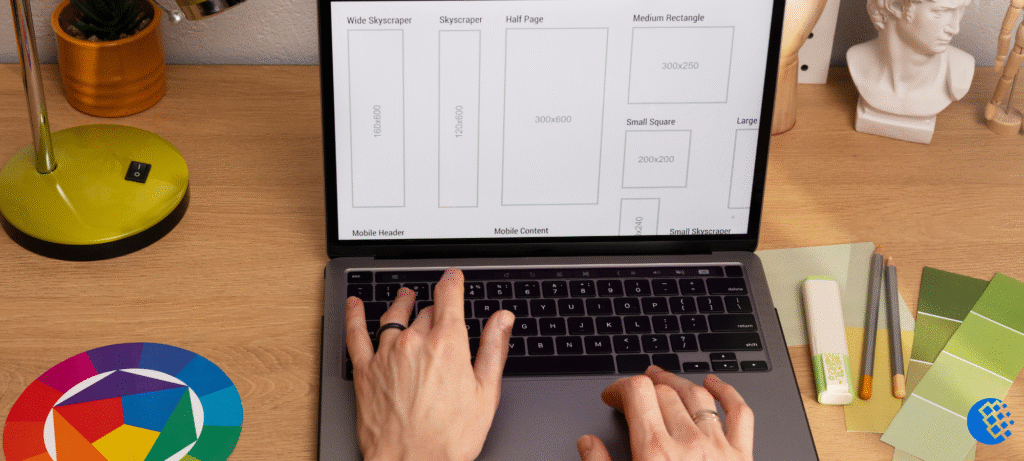For many businesses in Oxfordshire, a website redesign marks a turning point, a chance to modernise, attract better leads, and reflect how the company has evolved. Yet, too often, redesigns are rushed or handled without strategy, leading to beautiful sites that don’t perform. A successful redesign requires more than new colours or layouts; it needs clear goals, planning, and professional execution.
Working with experienced web designers in Oxford ensures that every decision, from structure to content, supports business objectives. Whether you’re aiming to increase conversions, improve user experience, or align your brand with a new direction, the right process makes all the difference.
This guide breaks down each stage of planning your website redesign, from early research to post-launch monitoring, so your business can transform its digital presence with clarity and confidence.
Why Website Redesign Is a Strategic Move for Oxfordshire Businesses
When Is It Time to Redesign Your Website?
Most businesses realise they need a redesign when the site starts holding them back.
You might notice:
- Visitors aren’t engaging with your pages.
- The design looks dated compared to competitors.
- Content no longer represents your brand or offerings.
- The website performs poorly on mobile or takes too long to load.
A redesign is not just a design exercise; it’s a business strategy to improve performance, usability, and brand alignment.
The Impact of Redesign on Growth and Visibility
A modern redesign supports multiple growth goals at once:
- SEO improvement: Clean code, fast speed, and optimised content boost visibility.
- User experience: Visitors find what they need quickly and trust your business more.
- Conversion rates: Better design flow leads to more enquiries, sales, or sign-ups.
For Oxfordshire SMEs, an effective redesign can mean the difference between being found locally and being forgotten online.
Step 1 , Define the Purpose and Goals of the Redesign
Identify What Isn’t Working on Your Current Website
Before designing anything new, you need to know what’s broken. Conduct a detailed audit:
- Review analytics to find drop-off pages.
- Check heatmaps to see where users stop engaging.
- Ask your team what feedback they receive from clients.
Common issues include cluttered layouts, weak CTAs, slow pages, or unclear service offerings.
Set Clear, Measurable Objectives
Every redesign needs defined outcomes. Examples include:
- Increase leads by 30% within six months.
- Improve mobile engagement by reducing bounce rate.
- Strengthen brand consistency across pages.
Tie every decision, colours, menus, or new pages, back to these measurable goals.
Step 2: Analyse Your Audience and Competitors
Understand Who Your Users Are
Knowing your audience ensures your design meets their expectations. Create user personas based on:
- Age, location, and buying intent.
- Common pain points and desired solutions.
- Device preferences: mobile, tablet, or desktop.
If your audience is local, prioritise accessibility and simplicity. People visiting from Oxford or the surrounding areas expect fast access to services, directions, and contact options.
Learn from Competitor Websites in Oxfordshire
Studying local competitors reveals what works and what doesn’t.
- Examine their layouts, colour choices, and tone of voice.
- Note how they present pricing, testimonials, or trust badges.
- Identify what gaps your site can fill, such as clearer messaging or better imagery.
This research helps you build a design that feels both familiar and superior.
Step 3: Audit Your Existing Website Content
Separate High-Performing Content from Weak Pages
Not all old content should be discarded. Some pages may already rank well or attract engagement.
- Use analytics tools to see which pages perform best.
- Retain blogs or landing pages with consistent organic traffic.
- Remove duplicate, outdated, or irrelevant content.
This selective approach ensures you preserve your site’s SEO strength.
Optimise Content for SEO and Relevance
Once you know what stays, refine it:
- Update headlines and meta descriptions with targeted keywords.
- Improve readability with shorter sentences and better formatting.
- Align tone with your current brand: confident, approachable, and professional.
Your redesign should make every piece of content feel intentional and up to date.
Step 4: Establish a Clear Redesign Strategy
Create a Site Architecture Blueprint
Before design begins, plan how your new website will flow.
- Outline all main sections: Home, Services, About, Blog, Contact.
- Map user journeys to ensure logical navigation.
- Keep key pages within two clicks from the homepage.
This blueprint serves as your design foundation, reducing confusion during development.
Align Redesign Goals with Brand Identity
Your visual identity should reinforce who you are today, not who you were five years ago.
- Refresh colours, typography, and images to reflect your growth.
- Maintain consistency with marketing materials and tone.
- Avoid trends that may age quickly; choose timeless, brand-aligned visuals.
A cohesive design builds credibility and strengthens recall.
Step 5, Prioritise User Experience (UX) and Accessibility
Design with the User Journey in Mind
Think from a visitor’s perspective: What do they need, and how quickly can they find it?
- Use clear headers to guide attention.
- Limit text blocks and prioritise key messages.
- Keep CTAs visible on every page.
User-first design improves engagement and reduces bounce rates.
Ensure Accessibility for All Users
Accessibility isn’t optional; it’s a standard of good design.
- Maintain high contrast between text and background.
- Use alt text for every image.
- Ensure the site works smoothly with screen readers.
Inclusivity not only widens your audience but also boosts compliance and reputation.
Step 6: Choose the Right Design and Technology Stack
Select a CMS That Supports Growth
Your choice of content management system affects long-term flexibility.
- Platforms like WordPress allow easy updates and plugin support.
- Custom CMS options offer scalability and tighter security.
- Discuss your business’s future needs with your development partner.
For local businesses, choosing a scalable CMS ensures your website grows as you do.
Balance Aesthetics with Functionality
Good design isn’t about adding elements , it’s about removing distractions.
- Avoid large animations that slow load times.
- Use imagery that supports your content, not overshadows it.
- Test your layouts on mobile, tablet, and desktop devices.
Form and function should always complement each other.
Step 7: Plan SEO and Technical Optimisation from the Start
Preserve Existing SEO Value During Migration
Redesigning a site without an SEO plan risks losing valuable rankings.
- Redirect old URLs to relevant new ones.
- Keep title tags and meta descriptions consistent where possible.
- Submit your updated sitemap to Google once launched.
Maintaining continuity ensures your redesign doesn’t undo years of effort.
Optimise Technical Elements
Performance and security directly affect search visibility.
- Compress images and use lazy loading.
- Implement SSL for secure browsing.
- Ensure fast load times through caching and clean coding.
A technically sound website improves both user satisfaction and SEO performance.
Step 8: Build and Test the New Website
Create a Staging Site for Internal Review
Never launch directly from design to live. A staging site allows internal testing.
- Review layouts, links, and page structure.
- Verify contact forms, booking systems, and integrations.
- Fix any errors before the public sees them.
This controlled approach prevents post-launch problems.
Conduct User Testing Before Launch
Invite a small group of real users to explore the site.
Ask them:
- Can they find key information easily?
- Do CTAs encourage action?
- Does the site load quickly on their devices?
User feedback at this stage helps refine usability and polish.
Step 9: Launch and Monitor Performance
Execute a Controlled Launch Plan
Treat your website launch like a campaign.
- Announce the new design on social media and email newsletters.
- Double-check DNS settings and analytics tracking.
- Keep the development team available for quick fixes.
Early impressions matter, so a smooth rollout is critical.
Track Results and Make Ongoing Improvements
Monitor performance from day one.
- Track metrics such as bounce rate, time on site, and conversions.
- Use heatmaps to see how visitors interact.
- Adjust design and content based on real data.
A launch is only the start; improvement is ongoing.
Step 10: Maintain and Continuously Improve
Keep Your Website Updated and Secure
A website is never truly “done.”
- Update plugins, themes, and security patches monthly.
- Check backups and server health regularly.
- Refresh visuals annually to stay current.
Maintenance protects your investment and ensures reliability.
Use Analytics to Guide Future Enhancements
Analytics reveal how users behave and what drives results.
- Identify underperforming pages for redesign or content updates.
- Add new features as business needs evolve.
- Use quarterly reports to plan enhancements strategically.
A website that evolves consistently keeps your brand strong and relevant.
Why Work with a Local Oxfordshire Web Design Partner
Local Insight and Personalised Support
Working with an Oxfordshire-based agency means partnering with a team that understands your market. They know your customers, competition, and business culture. Experienced web designers in Oxford tailor your redesign to reflect your brand’s local authenticity.
Proven Experience in Strategic Website Redesigns
Alberon’s design philosophy combines technical precision with business insight. From local service providers to educational institutions, they’ve helped Oxfordshire businesses redesign sites that deliver measurable ROI.
With their ongoing support, you’re not just getting a new website, you’re building a long-term digital foundation.
Conclusion: Redesigning Your Website the Right Way
A redesign is more than a design refresh; it’s a strategic upgrade to your brand’s digital identity. By following each step, from setting goals to post-launch analysis, you ensure your new website performs better, looks sharper, and lasts longer.
With experienced web designers in Oxford, your business gains a partner that understands both design and results. A well-planned redesign can turn your website into a growth engine, one that reflects your vision and delivers consistent performance for years to come.





